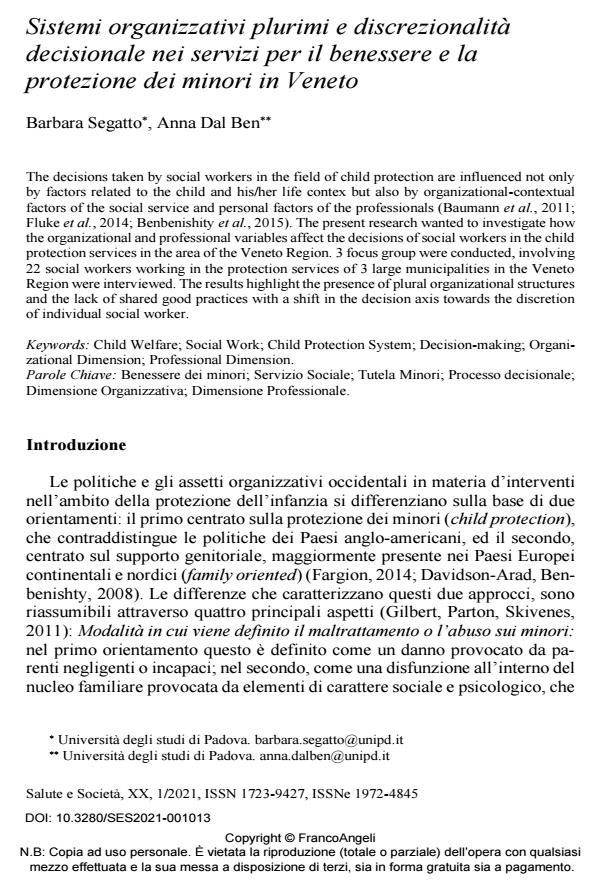Sistemi organizzativi plurimi e discrezionalità decisionale nei servizi per il benessere e la protezione dei minori in Veneto
Journal title SALUTE E SOCIETÀ
Author/s Barbara Segatto, Anna Dal Ben
Publishing Year 2021 Issue 2021/1
Language Italian Pages 16 P. 180-195 File size 454 KB
DOI 10.3280/SES2021-001013
DOI is like a bar code for intellectual property: to have more infomation
click here
Below, you can see the article first page
If you want to buy this article in PDF format, you can do it, following the instructions to buy download credits

FrancoAngeli is member of Publishers International Linking Association, Inc (PILA), a not-for-profit association which run the CrossRef service enabling links to and from online scholarly content.
The decisions taken by social workers in the field of child protection are influenced not only by factors related to the child and his/her life contex but also by organizational-contextual fac-tors of the social service and personal factors of the professionals (Baumann et al., 2011; Fluke et al., 2014; Benbenishity et al., 2015). The present research wanted to investigate how the organizational and professional variables affect the decisions of social workers in the child protection services in the area of the Veneto Region. 3 focus group were conducted, involving 22 social workers working in the protection services of 3 large municipalities in the Veneto Region were interviewed. The results highlight the presence of plural organizational structures and the lack of shared good practices with a shift in the decision axis towards the discretion of individual social worker.
Keywords: Child Welfare; Social Work; Child Protection System; Decision-making; Organi-zational Dimension; Professional Dimension.
Barbara Segatto, Anna Dal Ben, Sistemi organizzativi plurimi e discrezionalità decisionale nei servizi per il benessere e la protezione dei minori in Veneto in "SALUTE E SOCIETÀ" 1/2021, pp 180-195, DOI: 10.3280/SES2021-001013